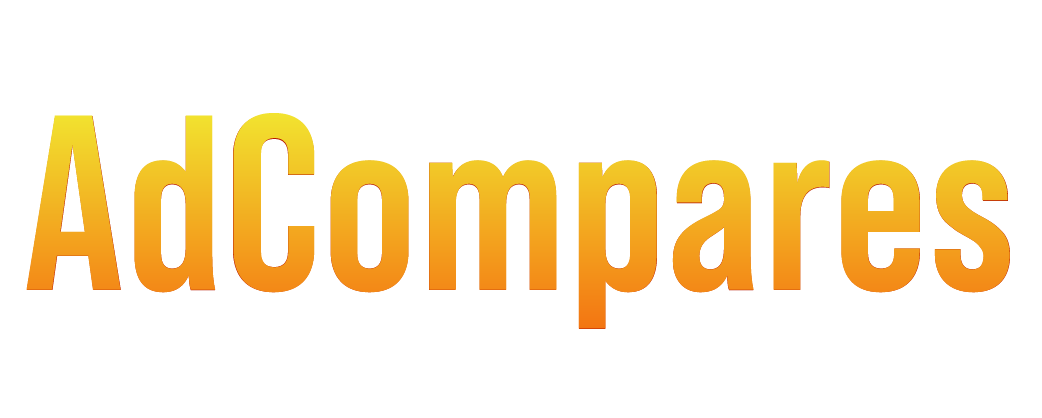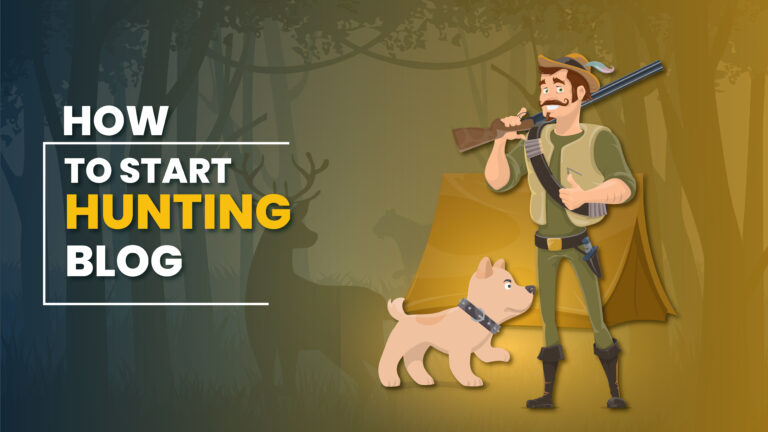Have you ever wondered how hunters are turning their passion into profitable blogs that educate, entertain, and inspire?
2026 is the year to take the leap. Whether you’re passionate about bowhunting, sustainable hunting, or reviewing the latest gear, a hunting blog can help you build your personal brand and connect with a global audience. The digital age has transformed the way we hunt for knowledge, and now it’s time for you to stake your claim in the blogosphere.
Starting a hunting blog is more than just sharing your experiences—it’s about building a community, sharing expertise, and leveraging modern tools like SEO and social media to reach your audience. If you’ve ever dreamed of sharing your outdoor adventures, expertise, or gear recommendations with the world, 2026 is the perfect time to turn that dream into a thriving blog.
Is It Still Worth Starting a Hunting Blog in 2026?
In 2026, starting a hunting blog is still a great idea. Hunting tips, gear reviews, and outdoor adventure content are always in demand. By tapping into niche topics like bowhunting, sustainable hunting, and hunting gear for beginners, you can attract a targeted audience and carve out your space in the market. The rise of platforms like Instagram, YouTube, and TikTok makes it easier than ever to promote your content and engage with your audience through visual content and short videos.
SEO tools, AI-powered content optimization, and social media marketing strategies will be essential for standing out and growing your blog. So yes, starting a hunting blog in 2026 is still very much worth it. The key is to leverage modern content strategies while staying true to your hunting passion.
What is a Hunting Blog and Why Does It Matter in 2026?
A hunting blog is a platform where you share insights, tips, and experiences related to hunting, from gear recommendations to hunting techniques and seasonal guides. In 2026, a successful hunting blog must go beyond basic articles—it should offer high-value content that educates and entertains.
To make your blog truly stand out, you need to incorporate multimedia, such as videos, high-quality images, and interactive tools. This not only makes your content more engaging but also boosts your SEO ranking. A well-optimized blog will rank higher on search engines and attract more traffic.
How to Choose the Right Niche for Your Hunting Blog
To stand out in the crowded hunting blog space, focusing on a specific niche is key. Here are some niches to consider in 2026:
- Bowhunting: Share techniques, gear recommendations, and strategies specifically for bowhunters.
- Sustainable Hunting: Focus on eco-friendly practices and conservation efforts, which are becoming increasingly important to hunters.
- Gear Reviews: Review everything from rifles to camouflage clothing, providing in-depth analysis to help your readers make informed decisions.
- Hunting Destinations: Share your experiences and tips for hunting trips in different regions or countries.
Selecting a niche helps you build authority and attract a more dedicated audience.
Choosing the Best Platform for Your Hunting Blog in 2026
Once you’ve decided on your niche, it’s time to choose a blogging platform. Here are the best options for 2026:
WordPress: The Best Choice for Flexibility and SEO
WordPress remains the top choice for most bloggers, offering flexibility, scalability, and SEO optimization tools. Whether you’re writing about hunting gear or sharing your adventures, WordPress offers customization options that will help your blog grow. Its extensive library of plugins helps you integrate features like social media sharing, SEO tools, and multimedia integration.
Wix: Ideal for Simplicity
If you prefer a drag-and-drop interface, Wix is a solid choice. It’s user-friendly and ideal for beginners who want to get their blog up quickly. However, it lacks the deeper customization and SEO tools available with WordPress.
Squarespace: Perfect for Visual Appeal
Squarespace is great for bloggers who want to focus on aesthetic design. If you plan to showcase hunting photography or videos, Squarespace offers beautiful templates. But for more advanced SEO tools and integrations, WordPress is a better option.
For most hunting blogs, WordPress is the top choice due to its flexibility, customization, and SEO capabilities.
Easy Steps to Write Your Hunting Blog in 2026
Once you’ve set up your platform, it’s time to start writing! Here’s how to write your first blog post and establish a solid foundation:
1. Research Your Topic
Before writing, conduct thorough research on your topic. Use tools like Google Trends or Ahrefs to find out what hunting-related topics are currently trending. If you’re writing about gear reviews, research the latest products, customer reviews, and expert opinions to give your audience comprehensive, up-to-date information.
2. Write an Engaging Introduction
Your introduction should grab your reader’s attention immediately. Start with an engaging hook, such as a personal story, a unique tip, or a provocative question to get readers interested right away.
3. Break Down the Content
Use headings and subheadings to break your content into digestible sections. This makes it easier for readers to skim and find the information they’re looking for. Include bullet points or numbered lists where necessary to enhance readability.
4. Incorporate Multimedia
Add images, videos, or infographics to supplement your text. If you’re writing about a hunting spot, show pictures or videos from your trip. Gear reviews are more engaging with unboxing videos or comparison charts. Interactive content like a map of hunting locations can also boost engagement.
5. End with a Call to Action
Wrap up your post by encouraging readers to leave a comment, subscribe to your newsletter, or follow your social media accounts. Calls to action help keep your audience engaged and build a community around your blog.
6. Optimize for SEO
Ensure your blog is optimized for search engines by using relevant keywords, creating compelling meta descriptions, and including internal links. Tools like Yoast SEO for WordPress can help with optimization.
Promoting Your Hunting Blog in 2026
After publishing, the next step is promoting your blog. Here’s how you can increase your reach:
- Social Media: Use platforms like Instagram, TikTok, and YouTube to post engaging content. Share your hunting photos, gear reviews, and vlogs to drive traffic back to your blog.
- SEO: Ensure your blog posts are optimized for search terms like hunting gear, bowhunting techniques, or hunting destinations. Great SEO will help your blog rank higher on search engines, attracting organic traffic.
- Networking: Collaborate with other hunting bloggers and influencers for guest posts, shout-outs, or partnerships. Networking helps you expand your audience and grow your blog.
- Email Marketing: Build an email list to send exclusive content, tips, and updates directly to your audience. This keeps readers coming back for more.
Monetizing Your Hunting Blog in 2026
Once your blog gains traction, you can start monetizing it:
- Affiliate Marketing: Partner with hunting brands and promote their products using affiliate links. You earn a commission when your readers purchase items through those links.
- Sponsored Posts: Reach out to hunting-related brands and offer sponsored content opportunities. Brands will pay you to write about their products or services.
- Ad Revenue: Use platforms like Google AdSense or Mediavine to run ads on your blog. The more traffic you get, the more money you can make through ad clicks.
By focusing on quality content, SEO, and engaging your audience, your hunting blog can become a profitable venture in 2026.
Conclusion
Starting a hunting blog in 2026 is a fantastic opportunity to share your passion with the world, connect with like-minded hunters, and even build a profitable online platform. By choosing a unique niche, creating high-quality content, and optimizing your blog for SEO and social media, you can stand out in a competitive space. With the right strategies in place—whether it’s affiliate marketing, sponsored posts, or ad revenue—your blog can grow into a sustainable and rewarding venture.
The key is to stay consistent, keep engaging with your audience, and continually evolve your content to stay ahead of trends. Whether you’re an experienced hunter or just getting started, 2026 is the perfect time to launch your hunting blog and make your mark in the hunting community. Happy blogging, and may your hunting adventures inspire others!
Frequently Asked Questions (FAQ’s):
Do I need to be an expert hunter to start a hunting blog?
No, you don’t need to be an expert. Many successful hunting blogs start with beginners who share their learning experiences. Focus on honesty and authenticity, and provide value through real experiences, tips, and gear reviews. People appreciate genuine content that helps them improve or discover something new.
How do I choose a niche for my hunting blog?
A niche is key to standing out in the crowded hunting blog market. Focus on specific topics, like bowhunting, gear reviews, or sustainable hunting practices. Research popular topics in the community, and consider what you’re passionate about—this will help you create content that resonates with your audience.
How long will it take to start making money from my hunting blog?
It can take several months to start seeing revenue. Consistency and quality content are essential. Once your blog gains traffic, you can monetize it through affiliate marketing, sponsored posts, or ad revenue. Don’t expect immediate returns—building a profitable blog requires patience and effort.
Should I use social media to promote my hunting blog?
Yes, social media is crucial for promoting your blog. Platforms like Instagram, TikTok, and YouTube are great for sharing your hunting adventures, gear reviews, and short videos. Visual content is highly shareable, which helps grow your audience and drive traffic to your blog.
What are the best ways to drive traffic to my hunting blog?
To drive traffic, focus on SEO, regularly post engaging content, and actively promote your blog on social media. You can also network with other bloggers or influencers in the hunting community, engage with your readers through email marketing, and use guest posts or collaborations to expand your reach.
Can I monetize my hunting blog with a small audience?
Yes, even with a small audience, you can start monetizing. Focus on affiliate marketing, where you recommend hunting products and earn a commission. You can also collaborate with brands for sponsored content. Start by targeting niche products or services, as smaller, targeted audiences often lead to higher conversion rates.

